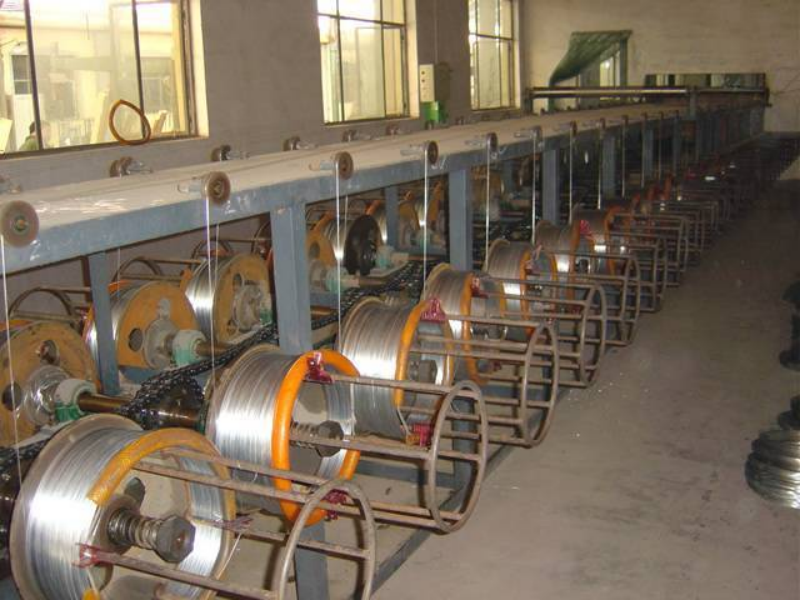
- Mobile Phone
- +8613931874955
- sales@cntcmetal.com
Guidelines for Properly Installing Cavity Wall Ties for Enhanced Structural Integrity and Longevity
Cavity Wall Tie Installation A Comprehensive Guide
Cavity wall construction is a popular method used in modern buildings, particularly in areas with cold climates. This design consists of two walls separated by a cavity, which provides insulation and drainage. One of the critical components in maintaining the structural integrity of a cavity wall system is the installation of cavity wall ties. This article will explore the importance of these ties, the installation process, and best practices to ensure a durable structure.
Importance of Cavity Wall Ties
Cavity wall ties are metal connectors that secure the inner and outer walls of a cavity wall system, preventing them from moving independently. Their primary purposes are to
1. Provide Structural Support Ties help ensure that the two walls work together to bear the load of the building, particularly during high winds or seismic events.
2. Control Moisture In a cavity wall, moisture can penetrate the outer layer. Ties are designed to allow any water that infiltrates to drain away without compromising the integrity of the inner wall.
3. Enhance Thermal Efficiency Proper installation of wall ties can minimize thermal bridging, increasing the thermal efficiency of the building.
Given these benefits, ensuring that cavity wall ties are installed correctly is vital to maintaining the safety and durability of the structure.
Installation Process
Installing cavity wall ties involves several key steps that require careful planning and execution
. Here’s a typical process1. Assess the Needs Prior to installation, calculate the number and spacing of ties required based on local building codes, the height of the walls, and the materials used. Generally, ties should be spaced no more than 600mm apart vertically and 900mm apart horizontally.
cavity wall tie installation

2. Select the Right Ties Choose appropriate ties made from materials that resist corrosion, such as stainless steel or galvanized steel. The type you select will depend on the specific environmental conditions of the construction site.
3. Prepare the Walls Ensure that the inner and outer walls are clean and free from dust and debris. This preparation is critical for ensuring a solid connection between the tie and the wall.
4. Install the Ties Wall ties should be installed in a staggered pattern to enhance stability. Begin by placing the ties in the outer wall, ensuring they are inserted into the mortar joints and bent back to anchor securely. The ends should be embedded into the inner wall to create a solid bond.
5. Check Height and Alignment Regularly check that the ties are installed at the correct height and are aligned vertically. Any deviations can lead to structural stress in the walls.
6. Reinforcement In areas with adverse conditions or heavier loads, consider using additional ties for reinforced support. Always follow manufacturer guidelines and local regulations.
Best Practices
To ensure the effectiveness of cavity wall ties
- Regular Inspections Periodically inspect ties for corrosion or wear, especially in older buildings. Ensure that any damaged ties are replaced timely.
- Seal the Cavity Use appropriate sealants to close off any gaps in the wall that could allow moisture in, while still permitting drainage.
- Consult Professionals If you are uncertain about the installation process, consider consulting a professional. Correct installation is crucial for the safety and longevity of the structure.
In conclusion, cavity wall ties are essential in the construction of cavity walls, providing necessary support and moisture control. By following a systematic installation process and adhering to best practices, builders can ensure a robust and efficient wall system for years to come. Regular maintenance and inspections will further enhance the integrity and longevity of the structure, safeguarding against future issues.
share:
-
Yard Sign Stakes: Reliable Guardians of Outdoor SignsNewsAug.04,2025
-
Wall Ties: Invisible Guardians of Building StabilityNewsAug.04,2025
-
Resilient Web: The Super Guardian Power of Concrete MeshNewsAug.04,2025
-
Masonry Accessories: A versatile assistant on building foundationsNewsAug.04,2025
-
Iron Binding Wire: the 'invisible reinforcement specialist' in the fields of architecture and industryNewsAug.04,2025
-
Dynamic Spring: The diverse functions and excellent performance of Wire Tension SpringNewsAug.04,2025
-
Your Source for Concrete Wall Ties and Masonry AccessoriesNewsJul.10,2025



















